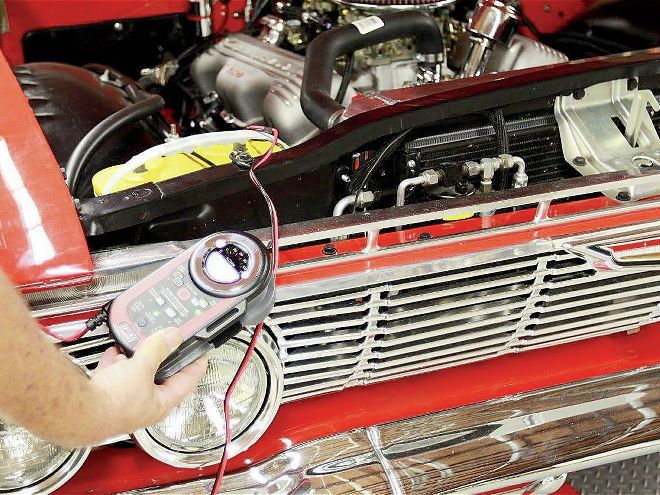
Most street rodders have a good grasp of their car's mechanical needs but selecting components that have to do with the starting and charging system often cause some confusion. Regardless of whether it's during initial construction or when items are replaced, picking the right parts can make the difference between reliable performance and a trouble-prone electrical system
Choosing a Battery
All automotive batteries have one thing in common; they use a combination of lead and acid to produce a little over 2 V per cell (as a result 6V batteries have three cells, 12V have six). The cells are made up of lead plates and electrolyte solution, which together cause a chemical reaction to produce electricity. As the battery discharges, the electrolyte reacts with the plates changing the composition of their surface. When the battery is recharged, the chemical reaction is reversed, restoring the plates to their original condition—the process is repeated during the discharge and charging cycles.
Although they produce electricity in a similar manner, there are three different configurations of lead acid batteries: wet cell, gel cell, and absorbed glass mat (AGM).
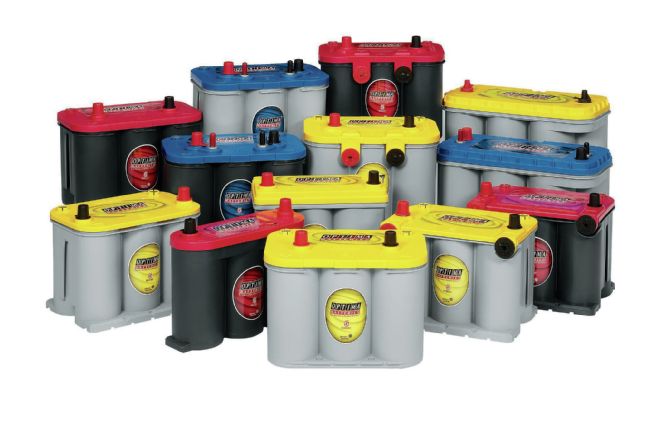 Absorbed Glass Mat (AGM) batteries, like this selection from Optima, come in starting, deep cycle, and marine configurations.
Absorbed Glass Mat (AGM) batteries, like this selection from Optima, come in starting, deep cycle, and marine configurations.
Wet Cell: Are flooded batteries that use liquid electrolyte and come in two styles, serviceable and maintenance free. Both are filled with liquid electrolyte but as the names imply water can be added to the serviceable style while the maintenance free is sealed.
AGM: These are unique in that the electrolyte is suspended in an absorbent fiberglass material, eliminating the need to flood the battery with liquid. This design makes AGM batteries spill proof and vibration resistant with the added advantage that they can be mounted in almost any position (however upside down is not usually recommended).
Gel: By using an additive the electrolyte stiffens and becomes a gel. In most cases these batteries are very sensitive to overcharging and premature failure may result. Gel batteries offer the same mounting options as an AGM.
Regardless of their construction, batteries are rated by their performance in a variety of categories:
CCA-Cold cranking amps is a measurement of the number of amps a battery can deliver at 0 degrees F for 30 seconds and not drop below 7.2 V. A high CCA battery rating is especially important for starting battery applications in cold climates.
CA is cranking amps measured at 32 degrees F. This rating is also called marine cranking amps (MCA).
Reserve Capacity (RC) is a very important rating. This is the number of minutes a fully charged battery at 80 degrees F will discharge 25 amps until the battery drops below 10.5 V.
An amp hour (AH) is a rating usually found on deep cycle batteries. If a battery is rated at 100 amp hours it should deliver 5 amps for 20 hours, 20 amps for 5 hours and so on.
So what kind style battery should you buy? If the battery is used regularly for starting, lighting, and ignition needs a starting battery is a good choice. However, for street rod applications where the vehicle may be stored for extended periods a deep cycle battery is preferable.
Charging/Maintaining Batteries
One of the peculiarities of AGM and Gel batteries is that some chargers may not work with them. Basically these batteries have such low internal resistance that many older chargers react as though the battery is shortened internally and simply won't throw a charge. Another issue can be that older chargers may overcharge an AGM or Gel battery causing permanent damage. Modern charges, such as those from Optima, will charge AGM, gel, and flooded batteries.
If you've ever jumped into your street rod only to find the battery dead, you understand the necessity of keeping the battery "hot." One of the best methods to do that is with the use of a battery maintainer. It will monitor the battery and keep it at full capacity during storage.
Battery Safety Tips
Sooner or later you'll have to remove or replace a battery and like everything else there's a right and wrong way to do it.
Batteries do pose a hazard due to the hydrogen gas that may be present during and after charging that can be ignited by a spark. For that reason when a battery is removed always disconnect the ground cable first—if the wrench hits ground there won't be a spark because the battery is already grounded. With the ground removed if the wrench hits metal while removing the positive cable there won't be a spark because there isn't a complete circuit with the ground removed.
Using Jumper Cables
If you mess with old cars sooner or later jumper cables are going to be involved. Again, there's a right and wrong way to use them.
When connecting jumpers, first connect the positive cable on both batteries. Connect the second cable to the negative on the good battery, and then make the final connection away from the dead battery on a good metal ground. By doing this any spark created will be away from the battery and any explosive hydrogen fumes.
Alternators
Normally all the power for the electrical system is delivered by the alternator when the engine is running. The only time that this isn't the case is when current capacity of the alternator is exceeded, which may happen at very low idle speeds with all the electrical accessories turned on. Alternators are rated by their amperage output, so when it comes time to select one it's important to know how many amps the electrical system consumes.
There are two reliable methods of determining the electrical system's requirements. One is to add the advertised requirements of all components together. Generally all electrical items will have their supply demands included with the instructions. Another way is to use an inductive ammeter with a "peak hold" function clamped around the battery cable while the car is running. While the latter method would be more accurate since it would be testing the electrical system as a whole in real world conditions, it's not always the most practical. The point is that when everything is turned on at the same time, the amperage demands on the electrical system can be surprisingly high so select an alternator accordingly. (Keep in mind, all the electrical accessories are seldom on at the same time.)
How Big is Big Enough?
Alternators are rated by their maximum output, a good rule of thumb is to pick an alternator that has 20 percent more capacity than the total demand of the electrical system. Another critical factor is the gauge of the charge wire from the alternator to the battery. The basic rule here is bigger is better—eight-gauge is usually recommended for alternators in the 85- to 125-amp range, six-gauge for 125-150 amps, and four-gauge for anything larger. Keep in mind, going larger than necessary isn't an issue, but going smaller definitely is.
Starters
The problem most often associated with starters is described as heat soak. It's generally believed that the starter gets hot and that's the source of the problem. However the real issue is almost always low voltage to the starter caused by inadequate wiring and battery cables. That low voltage causes that familiar rapid clicking from the starter, which is caused by voltage too low to keep the starter solenoid or relay engaged—the result of that racket is not only an engine that won't start but burned electrical contacts in those components.
The cure for this particular problem is simple enough, higher capacity components. As our friends at Powermaster explain it, "The starter circuit pulls a lot of amperage, up to 500 amps depending on the starter, the engine load, and battery condition. This kind of amperage stresses all of the components in the starter circuit, including the battery, battery terminals, the battery disconnect switch, the cables, including the ground path, and any remote solenoids. Problems with these components are hard to find because they appear fine at rest or under a light load, but generate high resistance under heavy amperage draws. The result will be low voltage to the starter during cranking, resulting in heavier amperage draw and increased internal heat in the starter. Over time, this will cause starter failure. Voltage measured at the starter during cranking should always be above 9.5VDC.
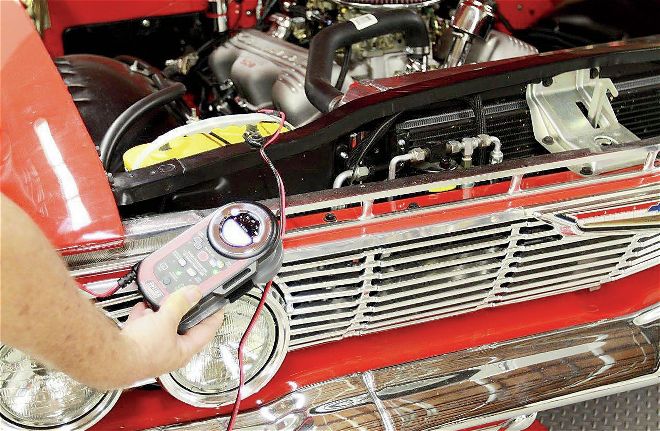 The best way to eliminate starting and charging issues is to choose the proper components and maintain them regularly.
The best way to eliminate starting and charging issues is to choose the proper components and maintain them regularly.
Drivebelts
Often overlooked as a source of charging problems are drivebelts. They must be in good condition and adjusted properly. As serpentine belts wear they lose material and the pulleys "bottom out" in the belt's grooves. This reduces contact area and the belts begin to slip.
As V-belts wear they also ride in the pulleys differently. A worn V-belt will often ride low enough in the pulley to make contact with the bottom of the groove. That prevents the sides of the belt from making good contact with the sides of the pulley groove as it should. This reduced friction causes slippage; a belt worn enough to bottom-out should be replaced.
While slipping belts that squeal are annoying they also create another problem—excess heat. Over tightening belts is often blamed for knocking the bearings out of alternators; the fact is far more alternator bearings are ruined by heat generated by slipping belts.
Grounds
There are more electrical problems created by bad grounds than anything else. The engine, frame, and body must all have a good ground path leading back to the battery (on fiberglass cars special attention must be given to grounding all electrical components). It's also critical that paint, powdercoating, and rust are cleaned from any grounding surface. Unlike some things, your street rod can never have too many grounds.
Master Switch
There are a number of reasons for a master shut off switch, including security. However, if it's being used to keep the battery from running down overnight there are problems that should be addressed.
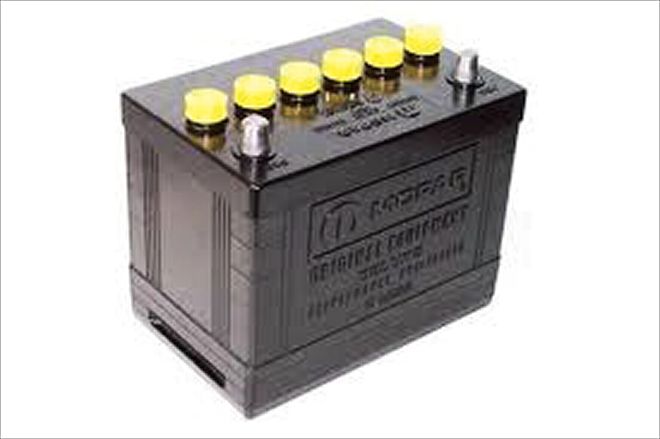
1. Wet cell batteries are still used by restorers and those wanting the old-school look. Maintenance includes cleaning with a baking soda and water solution to neutralize contamination from the charging process and checking water level.
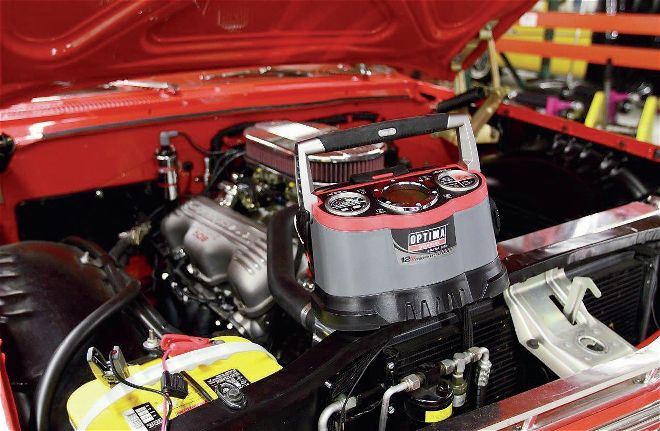
2. For AGM gel and flooded batteries Optima offers the Digital 1200 Charger and Battery Maintainer. It recovers deeply AGM discharged batteries that other chargers can't without the danger of overcharging.
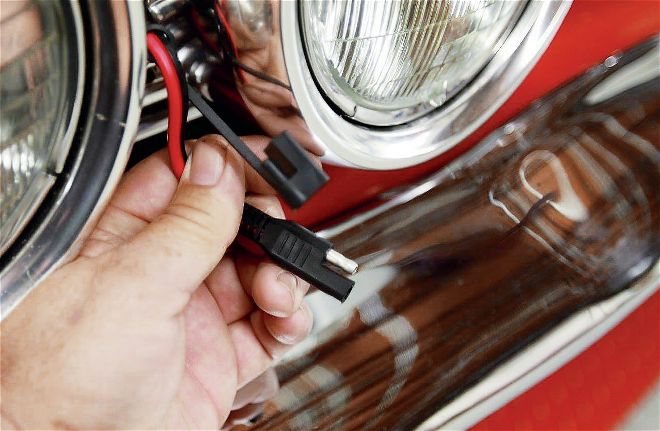
3. The compact Digital 400 Maintainer and Battery Charger from Optima can be used as a marine battery charger, motorcycle battery charger, or to charge and maintain other AGM batteries.
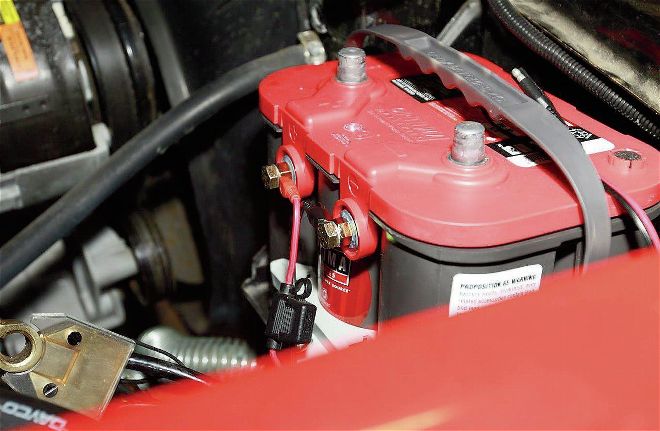
4. For convenience the Optima chargers come with connectors that can be permanently installed on the battery.

5. With the pigtail in place it's simply a matter of plugging in the battery charger/maintainer when the car will be parked for an extended period.
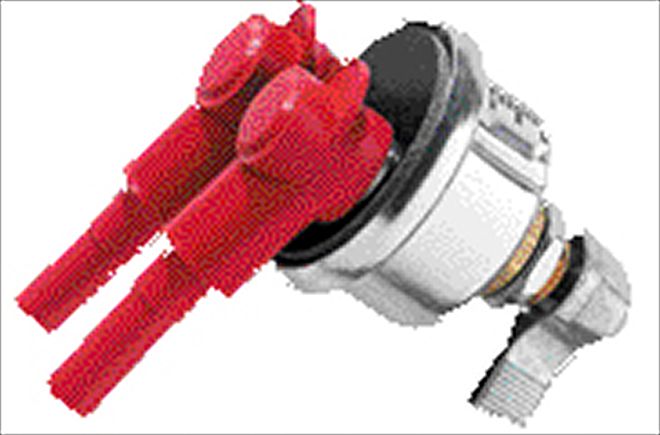
6. A battery shut-off switch is always a good idea, and unless a racing organization says otherwise, they should always be in the positive cable. This example is from Ron Francis.
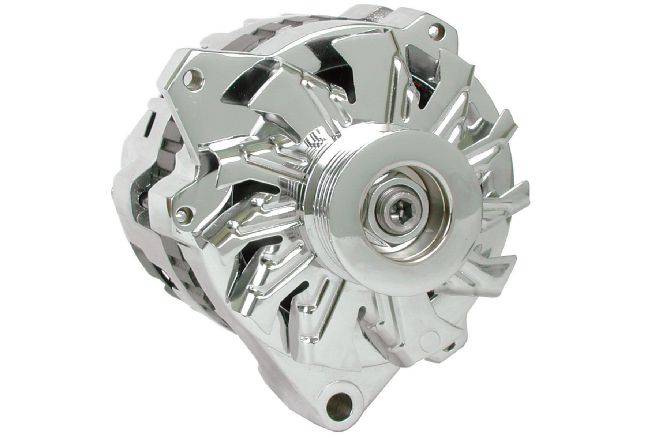
7. Powermaster offers alternators of all descriptions with a wide range of amperage ratings. It's advisable to have a 20 percent cushion on the charging systems requirements and make sure the charge wire is sized appropriately.
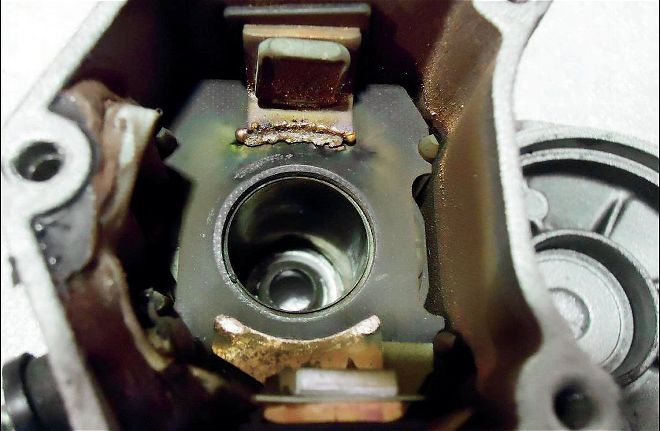
8. Hot starting problems are more often than not a low-voltage issue. The result is that repetitive clicking of the solenoid that results in burned contacts like those shown here.
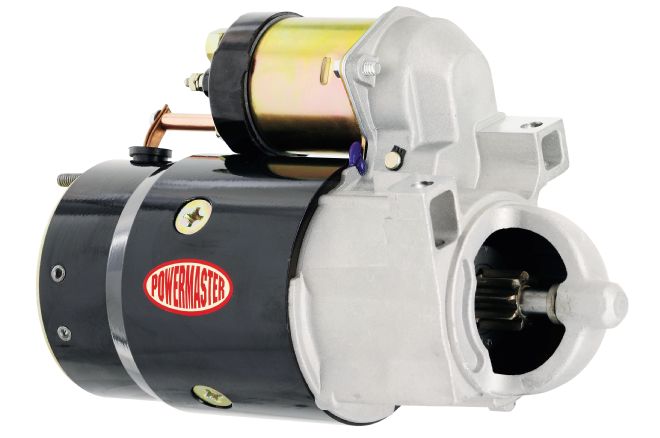
9. In most cases starters are trouble-free, although some situations an engine may require higher torque that stock unit can produce.
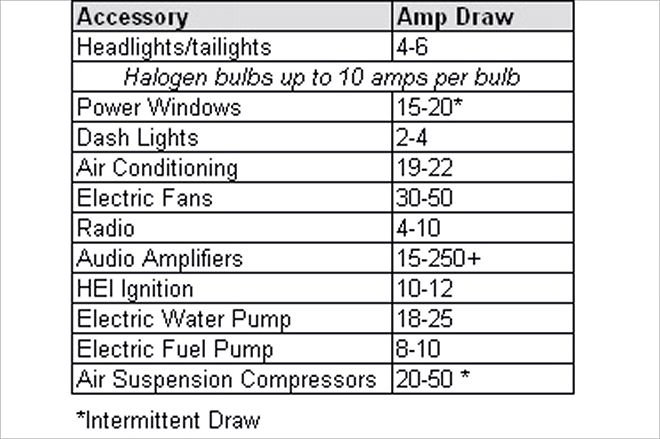
10. The most accurate means of determining amp load is with an ammeter, however a pretty accurate guesstimate can be made by using specs from the manufacturers of the electrical components in use and the following chart.
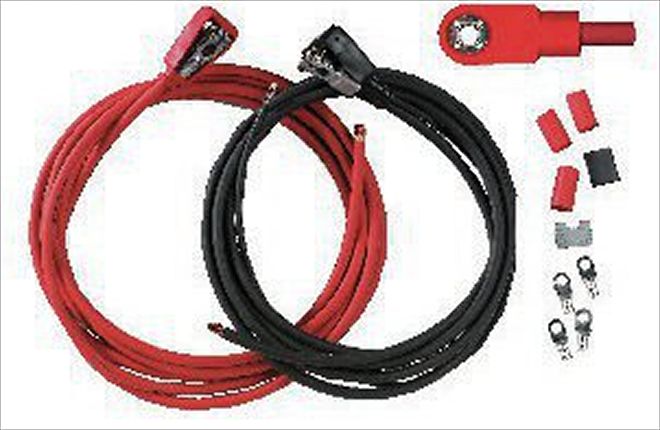
11. Battery cables are critical to starting and charging functions. Long cables, such as with trunk-mounted batteries must be sized accordingly. These are four from Ron Francis.
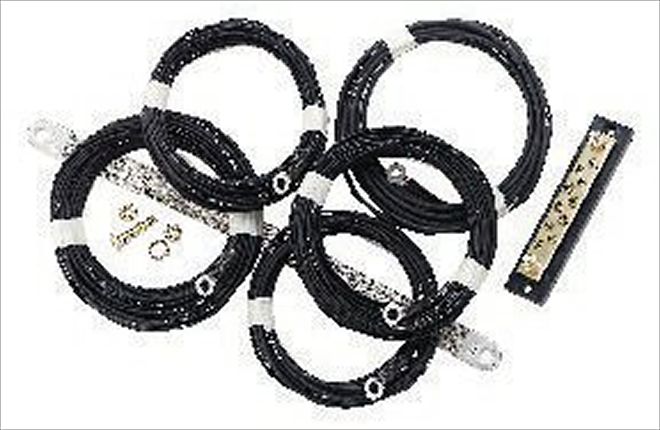
12. Good grounds are one of the secrets to a properly operating electrical. Ron Francis ground kits with wire, buss bars, and braided straps are a good investment. The braided cables work well for grounding the block to the frame and body.
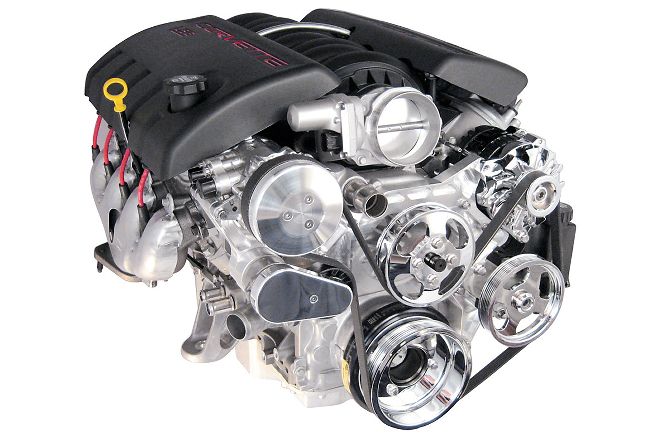
13. Modern serpentine belt systems, like the FrontRunner from Vintage Air use a tensioner to keep the belt tight. Serpentine belts should be replaced when they become worn, frayed, glazed, or are severely cracked.
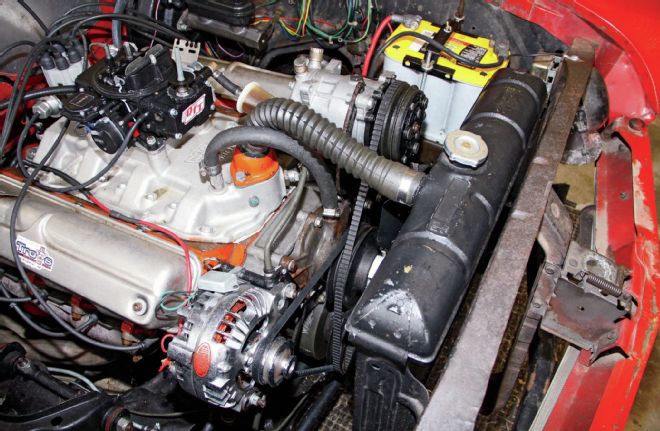
14. V-belts are still common but be aware there are quality problems with the cheap offshore variety. They often don't fit the pulleys correctly and tend to slip so look for name brands.
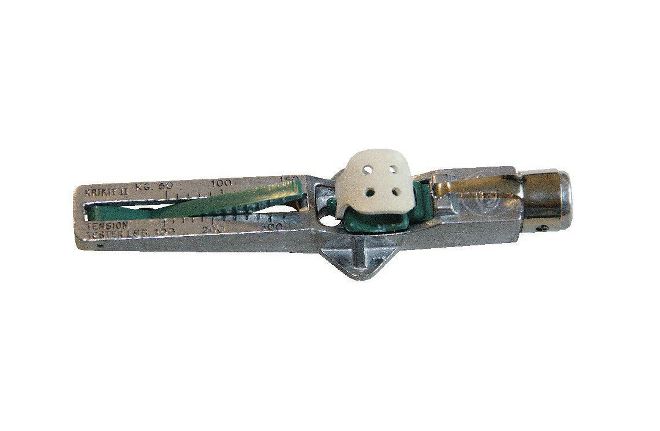
15. When checking the adjustment of a V-belt it should move approximately 1⁄2 inch when you press on it between the pulleys, or it should twist 90 degrees. Another option is the Krikit belt tension tool from Gates, it costs under $15.